Signage Solutions for Convenience Stores
Signage Solutions for Convenience Stores
Table of Contents
The convenience store industry is experiencing a shift toward the QSR model, and the numbers tell a compelling story.
- Today, approximately 140,000 of the country's 151,000 convenience stores offer a foodservice program*
- Total consumer spending on prepared foods and beverages at c-stores are projected to reach $27 billion this year, a remarkable 42% increase from 2015*
-
C-store foodservice grew 5% in 2024 and is projected to grow 5.7% in 2025, outpacing QSR growth rates of 4.1% last year and an expected 4.7% in 2025*
Despite this impressive growth, there's still tremendous opportunity ahead. The traditional grab-and-go model in convenience stores is evolving into a comprehensive retail experience that combines quick service restaurant (QSR) elements with enhanced customer engagement strategies.
This evolution requires more than just adding a few food options, it demands a complete reimagining of how customers interact with your store. Digital signage, strategic loyalty program integration, and self-service solutions are no longer optional upgrades; they're essential tools for maximizing customer ticket sizes and building lasting relationships with your community.
At The Howard Company, we've spent over 75 years helping businesses communicate more effectively with their customers. We work closely with store owners to connect loyalty apps to software systems, integrate with POS systems, install custom branded menu boards, and create seamless pricing integration that drives both efficiency and profitability.
This is our expertise put into one comprehensive guide for forward-thinking convenience store operators to capitalize on the opportunity and not get left behind.
The Emerging Trends of Convenience Foodservice
Convenience stores are no longer just places to grab fuel and a quick snack. Today's most successful convenience stores are becoming destination locations that offer fresh food, quality coffee programs, and personalized customer experiences. This shift toward the QSR model within convenience store storefronts represents one of the most significant opportunities for revenue growth in the industry.
Why Digital Signage is Essential for Modern Convenience Stores
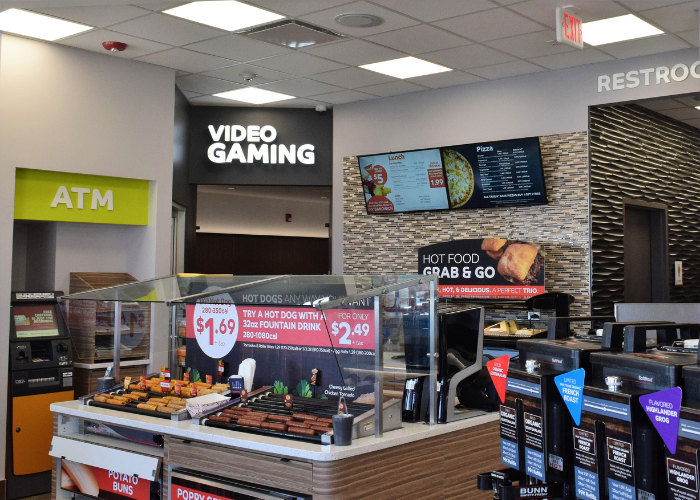
So why is digital signage in c-stores important? In the simplest terms, they can help increase your locations revenue and create a more positive customer experience.
We can apply some of what we know from our 75 years in the QSR industry to show the importance of digital signage, the data is clear on immediate benefits:
Average increase in sales seen from digital menu boards
Decrease in perceived wait time for customers
Of Customers Are Influenced By Visual Elements
But beyond immediate benefits, digital signage provides convenience stores with unprecedented flexibility to adapt to changing market conditions, seasonal promotions, and real-time inventory management. When fuel prices fluctuate or when you want to promote a new coffee blend, digital displays allow you to make these changes instantly across single or multi-location operations.
Here are some more advantages digital signage solutions can offer convenience stores:
Operational Flexibility: Quick updates to pricing, promotions, and product availability across all locations from a centralized content management system.
Enhanced Customer Experience: Clear, attractive displays that make it easier for customers to make purchasing decisions quickly.
Revenue Optimization: Strategic placement of promotional content and upselling opportunities that increase average transaction values.
Staff Efficiency: Reduced time spent on manual price changes and promotional updates, allowing staff to focus on customer service.
Brand Consistency: Uniform messaging and visual presentation across all locations, strengthening brand recognition.
Ready to implement digital signage?
Indoor Menu Board Solutions for Convenience Stores
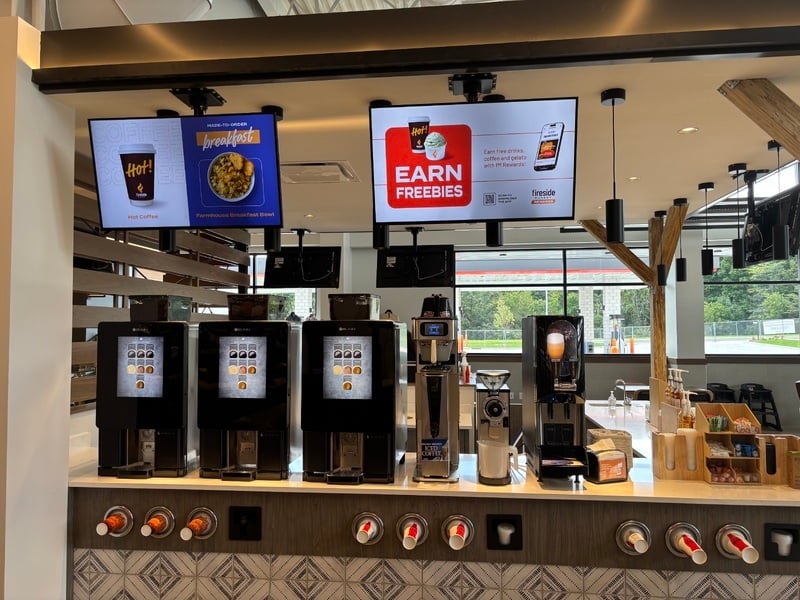
Digital Indoor Menu Board Options
Why go digital for menu boards at all? One reason is that modern convenience stores benefit from digital display configurations that can be customized to fit any space and serve multiple purposes. Whether you're showcasing your expanded grab-and-go food selection, promoting coffee specials, or highlighting loyalty program benefits, digital displays provide the versatility to adapt your messaging throughout the day and create a visually appealing experience for your convenience store visitors.
Digital displays work in tandem with content management systems which allow you to schedule different promotions for different groups of customers including morning commuters, lunch-time customers, and evening shoppers. This level of customization and automation helps maximize the relevance of your messaging while ensuring that high-margin items receive appropriate visibility during peak demand periods.
You can learn more about our digital indoor menu boards on our website, here.
Commercial Grade Monitors
When discussing indoor digital signage for convenience stores, it's crucial to understand the importance of commercial-grade monitors. Unlike consumer displays, commercial monitors are engineered for continuous long-term operation, offering superior reliability, enhanced brightness control, and extended operational lifespans that make them ideal for retail environments.
Commercial-grade displays also provide several advantages that are particularly important for convenience store applications. They offer consistent performance during extended operating hours, maintain image quality under varying lighting conditions, and include advanced connectivity options that support the complex content management systems needed for operations.
Static and Hybrid Indoor Menu Boards For Convenience Stores
At The Howard Company we offer many different indoor menu board options that are not fully digital. These options include magnetic menu boards, or as we call them benchmark menu boards. Another option is our illuminated menu boards, and finally our hybrid menu board options. These options are perfect if you want to incorporate more static graphics into your convenience store or are looking for a lower cost solution to indoor signage.
To visualize all of the interior branding solutions including indoor menu boards, you can checkout our resource on the anatomy of a convenience store interior.
Self-Service Kiosks
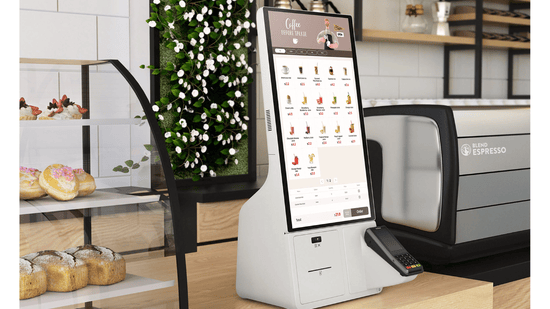
Industry data consistently shows that 64% of customers prefer self-service options when available, and 85% view self-service as a faster alternative to traditional ordering methods. For convenience stores embracing the QSR model, self-ordering kiosks represent a significant opportunity to meet these customer preferences while driving increased sales.
So how exactly do self-ordering kiosks increase sales?
Research conducted by our partner Nanonation indicates that kiosk orders typically generate a 28% increase in average order volume compared to traditional counter service. This increase occurs because kiosks provide customers with more time to browse options, clearly display upselling opportunities, and remove the social pressure that sometimes prevents customers from adding items to their orders.
Enhancing the C-Store Grab-and-Go Experience
Kiosks are particularly well-suited for convenience stores because they complement the grab-and-go service design while encouraging customers to explore your expanded food offerings that they may not know anything about.
This is incredibly important because according to a Technomic study done, 64% of people who choose a convenience store for food over QSRs, do so because it is faster/easier to stop at the c-store*. Kiosks fit directly into this preference, allowing easy, quick and efficient ordering for busy commuters and convenience store visitors.
Self-service options also allow your staff to focus on food preparation, inventory management, and assisting customers who need more personalized service.
Drive-Thru Solutions for Convenience Stores
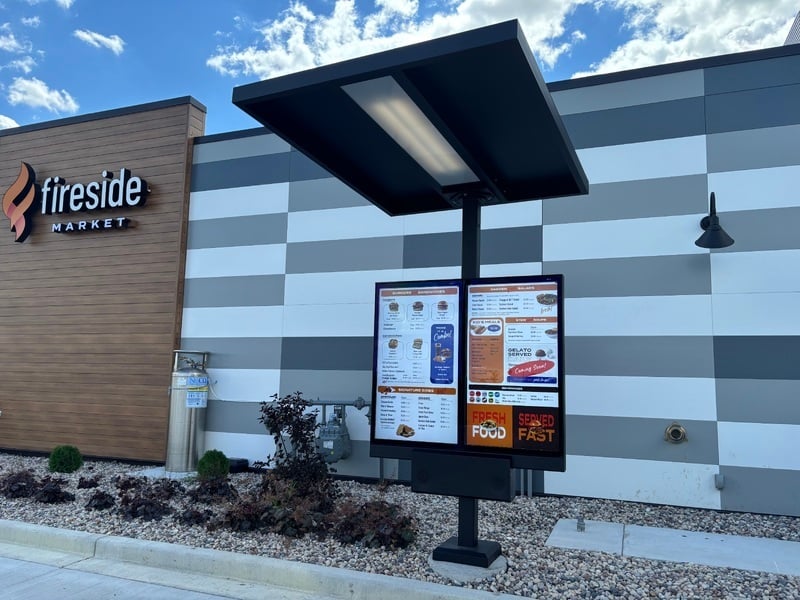
For convenience stores, implementing a drive-thru solution provides a competitive advantage that can significantly impact overall sales performance, and create a unique and convenient experience for visitors of your location.
The drive-thru can be a powerful tool but it is important to think through how it will affect your location before you add one. We have a comprehensive blog post about what convenience stores need to know before adding a drive-thru that you can read, here.
Customizable Drive-Thru Configurations
Every convenience store location has unique spatial constraints and operational requirements. Our approach involves working closely with convenience store operators to develop drive-thru solutions that maximize operational efficiency while fitting seamlessly into the existing site layout.
At The Howard Company our range of solutions includes anything from compact single-screen configurations to comprehensive multi-display systems, we provide options that scale with your business needs now and in the future including static, digital or a hybrid of both. You can learn more about all of our drive-thru solutions and how they can best serve your business on our website, here.
Let us help you maximize your sales with some of our best-in-class marketing tools including the anatomy of a convenience store drive-thru guide. This download showcases many of our custom branding solutions available and exactly how they will fit into a convenience store drive-thru.
Other Signage Solutions
Convenience stores may also need different custom branding solutions outside of digital to fit their overall strategy. These other solutions include:
- Merchandising and POP for convenience stores: explore different custom solutions including outdoor merchandising, point-of-purchase brandings, and decor materials.
- Exterior signs for convenience stores: explore the different ways to add your c-store branding, logo, and custom messaging to exterior signs.
Loyalty Program Integration and Software Solutions
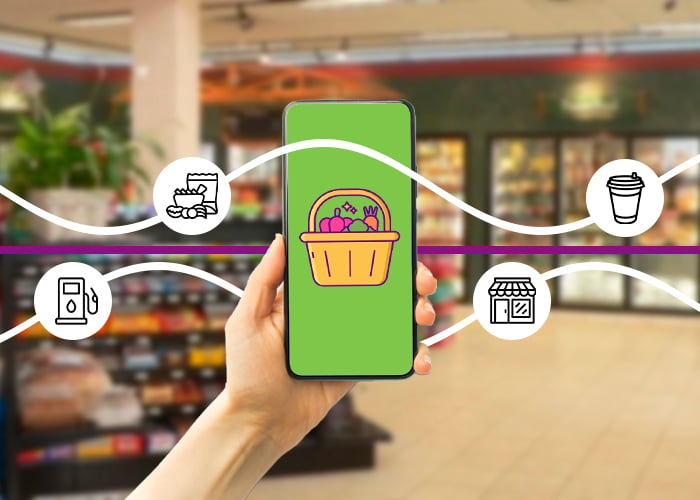
Convenience stores operate with multiple software systems that handle everything from inventory management to customer rewards programs. Our expertise lies in connecting these loyalty apps and different systems with our digital screens to create a seamless customer experience.
We also support advanced loyalty program integration, allowing you to create distinct reward structures for different customer touchpoints, whether that is fuel purchases at the pump, in-store retail transactions, or during a drive-thru order service.
Integrations can be difficult, we are here to help!
Investment Considerations and ROI
Digital signage, self-service kiosk solutions, and drive-thrus represent significant investments that require careful consideration of costs and the expected returns. Our experience across hundreds of implementations has provided valuable insights into the factors that drive successful ROI outcomes.
Typical indoor digital signage solutions range from $2,000-$8,000 per location, depending on screen size, commercial-grade specifications, and integration requirements. This can vary greatly, so reference our how much do indoor menu boards cost guide to get a better idea of pricing.
Drive-thru implementations generally range from $5,000-$25,000 depending on the scope of the project, with variations based on site complexity and feature requirements, you can also read more about how much a drive-thru costs on our guide.
Self-service kiosks typically require investments of $2,000-$5,000 per unit, not including integration and installation costs. To find out more about how much a kiosk costs and why you can read our guide on pricing, here.
Long-Term Value Creation
While initial investment costs are important to factor into a decision, the long-term revenue opportunity potential of these solutions exceeds the upfront expenses. Increased average transaction values, improved operational efficiency, enhanced customer satisfaction, and reduced labor costs contribute to ongoing financial benefits that compound over time.
The key to maximizing your return on investment lies in strategically implementing technology that aligns with your specific business objectives and customer needs.
Next Steps: Planning Your Transformation
Successful digital signage implementation begins with a thorough understanding of your current operations, customer patterns, and overarching business objectives. We recommend starting with a comprehensive assessment that evaluates your existing infrastructure, identifies optimization opportunities, and establishes clear success metrics.
Our consultation process involves a site evaluation, stakeholder interviews, and an analysis of your operations. This information forms the basis for customized recommendations that address your specific needs while providing scalable solutions for future growth.
Get in Contact With Us
Convenience Store Case Studies
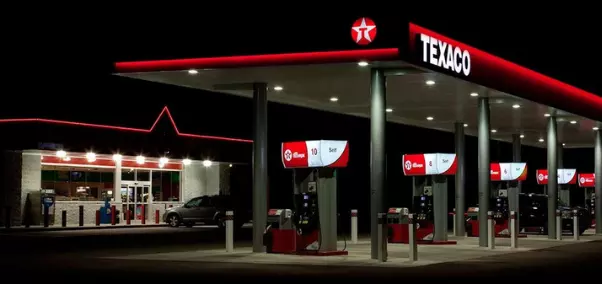
- Learn about how Kent Kwik utilized our indoor digital and drive-thru solutions
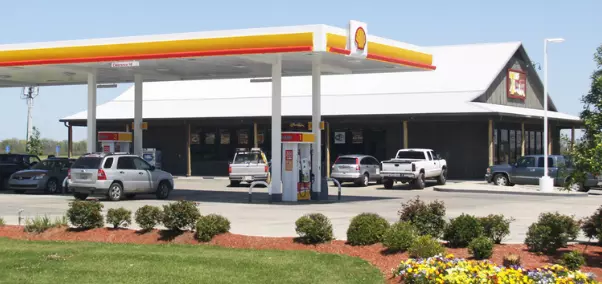
- Read about how Y-Not Stop implemented digital displays into their locations
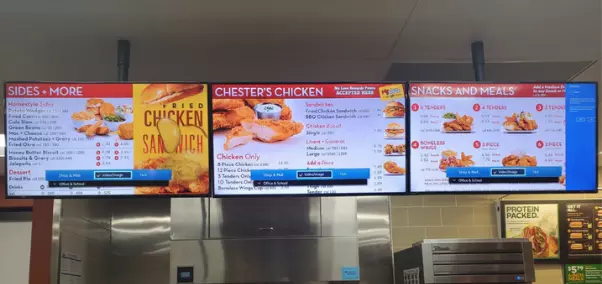
- Read about how Love's Travel Stops & Country Stores/Chester's Chicken implemented our digital signage into their convenience stores
Convenience Stores We Have Worked With








SHARE